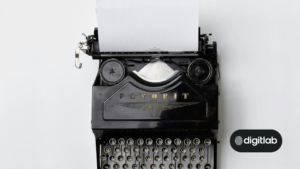In a world ripe with contradiction, where the environment lies on one side of the argument and the tradition of the printed word lies on the other, one must ask the question ‘eBooks or paper?’
It’s no secret that the rapid rate in which climate change and environmental issues are catching up to us is astounding. We’ve been hearing about how concerned we should be about the environment via countless news sources for many years now.

The writing is on the wall and this is definitely grounds for behaviour change. But how rapid must this change be?
Yes, with the inception of eBooks, reading and staying up-to-date with your favourite novels, magazines, and even textbooks is now more convenient than ever. However, that said, printed books are definitely still relevant. Both have pros and cons, but while one person complains about environmental damage and waste, another person is reading about it on their iPad…
The pros of paper
The pros of printed books are that they’re easily and readily obtainable. Bookstores are still in abundance and usually in close vicinity to shopping malls, airports, and anywhere that people tend to go.

Books are still fairly portable – they’re easy to carry around, depending on how many you need to have on you at any one time.
When used with proper lighting, printed books don’t generally strain the eyes, and can be read anytime, anywhere, provided that there’s an adequate light source. And then, there’s the added advantage that they don’t need power to run.
With certain types of content, a printed book just feels better i.e. a textbook or any large format books, as well as photo or picture books.
But the real selling point is this – printed books are STILL cheaper than eBooks; with some used books on Amazon available for as cheap as 1 cent!
The pros of e-reading
With an eBook, you first need to buy a reader such as a Kindle (which starts at about $79) or iPad, but with a reader, you can store

multiple books on one device – it doesn’t get more portable than that. They’re easy to use and don’t require a bookmark because your place is saved automatically.
eBooks are useful in that they can be easier to read – with zoom functions and letter resizing which makes it easier for you to customise your book according to personal preference. You can also make notes that are organised, clear, and easy to go back to. eBooks are becoming increasingly popular among students for just this reason – notes are easy to store and all information can be kept in one place.
An obvious advantage to eBooks, especially in the ‘green’ age, is that they don’t require any trees to be damaged in the process of making them. Paper and ink are damaging to the environment, with thousands of trees being destroyed annually to produce printed books.
However, eBooks are not without their flaws. They’re useless without a reader. They need to be kept charged and are easily damaged by heat. Other drawbacks include things like software glitches, screen problems, slow working readers, and internet connections can all have an effect on your pleasurable reading time.
eBooks publishing revolution
The advent of the eBook has changed the publishing industry, as well as the way writers promote themselves. ePublishers expect writers to market and self-promote their books, whereas in the past, the publishing agencies would help promote the writer in order to sell their books and see returns. ePublishing doesn’t require that you have an agent. It takes a lot less time to get noticed as a writer with ePublishing, whereas sometimes it can take months or years to get responses from print publishers.
ePublishers don’t pay advances, but do pay royalties on a monthly or quarterly basis. ePublishing royalties are generally much higher than print royalties – in the range of 35% for eBooks compared to 7% for print books.
The majority of ePublishers also publish in print, but on a print-on-demand basis as printed books are more expensive to publish. Publishers can keep eBooks in stock indefinitely as long as they continue to sell.
In short, you need to be more dynamic and open to change if you want to go the ePublishing route.
 At the end of the day it comes down to preference. Whether you’re waiting on the newest release from Kindle, or slowly paging through the chapters of your newest print novel, personal preference is the deciding factor
At the end of the day it comes down to preference. Whether you’re waiting on the newest release from Kindle, or slowly paging through the chapters of your newest print novel, personal preference is the deciding factor
If you are a fan of the printed word, or the smell of old books, I wouldn’t get despondent just yet – bookstores will still be around for a little while – at least as long as eBooks aren’t yet price competitive…




